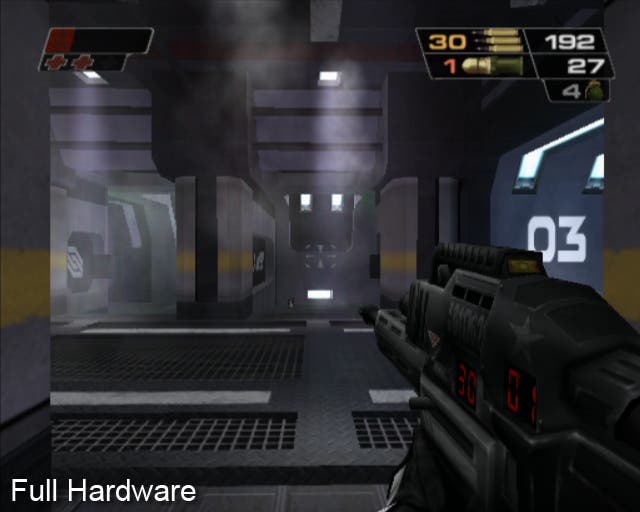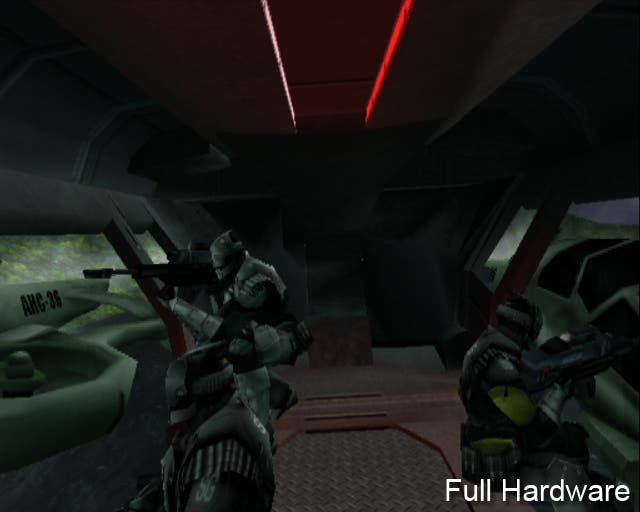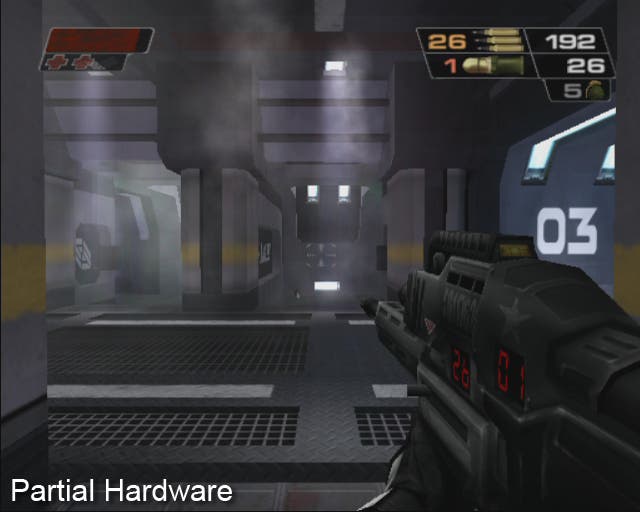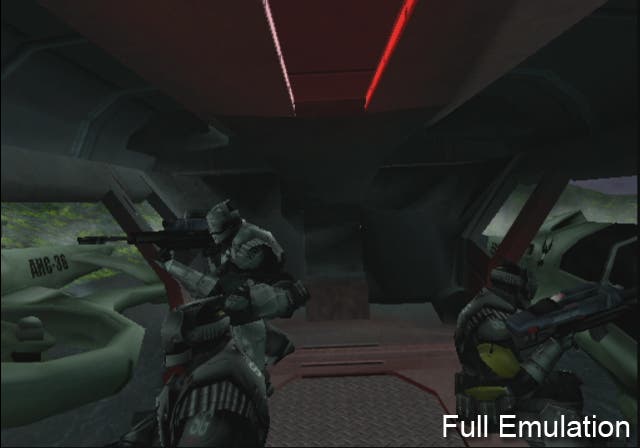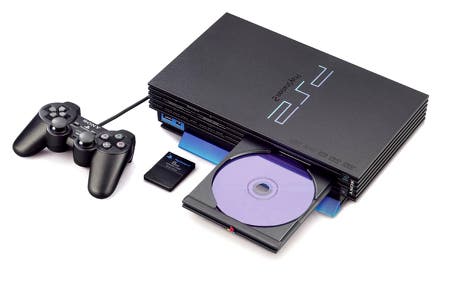Digital Foundry vs. PS2 Classics on PlayStation 3
Backwards compatibility returns for all PS3s - at a price. So just how good is the PS2 emulation?
PS2 backwards compatibility remains something of a contentious issue for PlayStation 3 users. US and Japanese launch models featured the principle PS2 hardware built into the system, making for excellent support for almost all legacy PlayStation titles and the ability to run older games with a precision HDMI output. By the time the EU launch rolled up months later, the design was altered, removing the PS2 CPU - dubbed the Emotion Engine - and replacing it with software emulation to mixed results. With Sony still haemorrhaging cash on PS3 production, all PS2 components were removed by October 2007, and backwards compatibility was no more.
But the story doesn't end there. Behind the scenes, Sony has been working on restoring PS2 support for all PlayStation 3 consoles regardless of configuration, and we've now reached the point where you can visit the PlayStation Store and download 74 "PS2 Classics" - in truth a roster of immensely variable quality, with only a smattering of stand-out titles. Warnings are given out that the games are running under emulation and may vary from the original PS2 experience, but the real kicker is that you'll have to pay for them - even if you own the original discs. While lesser known games cost between £0.99 to £3.99, most of the titles cost £7.99 a pop.
Value issues aside, we wanted to find out more. From a technical perspective, the notion of original PS2 code being able to run under emulation on the PlayStation 3 is a seriously impressive feat of engineering. Ken Kutaragi's finest hour hails from an era where games machines featured custom components built from the ground up, a necessity in an era where PC parts were too expensive to be crammed into a console box. The Sony R&D team responsible for the PS2 software emulator have achieved something of a miracle here - the design of the older console is completely alien to the hardware set-up of the PlayStation 3. The PS2's graphics synthesizer GPU in particular, with its attached eDRAM, offers levels of bandwidth that even the RSX may have issues duplicating.
"Having phased out support for PS2 backwards compatibility, Sony has been working behind the scenes on a full software solution for all PS3 owners - and the results are impressive overall."
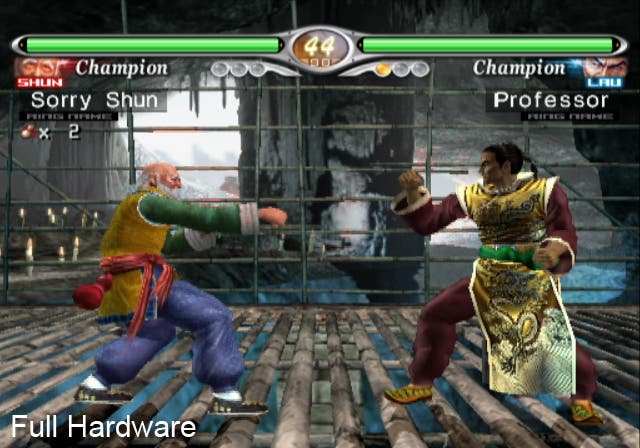


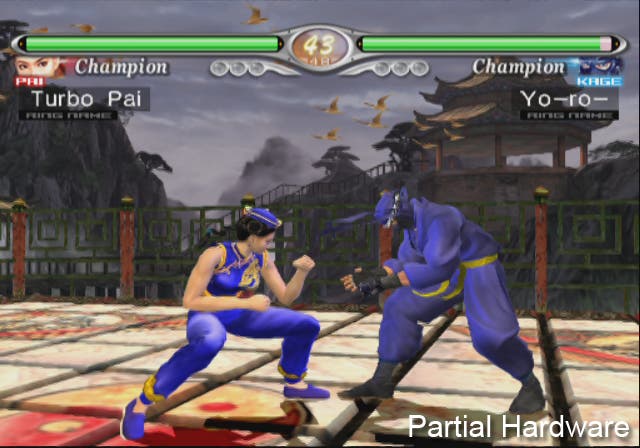
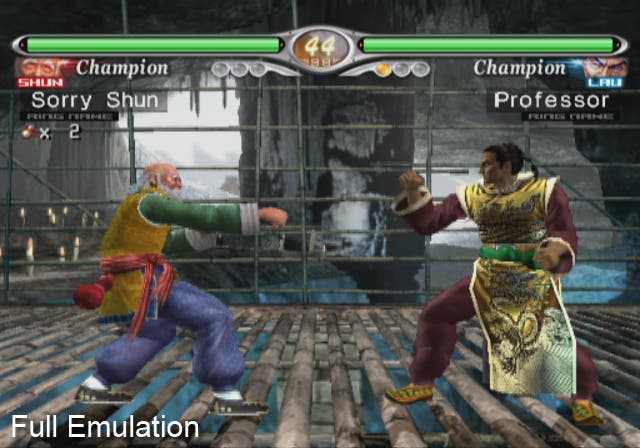
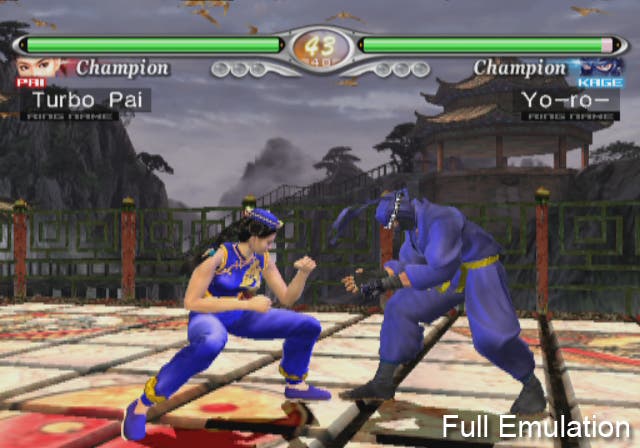
Out of a library of thousands of games, the fact that only 74 are currently available suggests that the emulator remains a work in progress, that many games simply don't work at the moment: not surprising bearing in mind how many developers pushed the system's architecture in ways its creators never even conceived of. Additionally, it is perhaps telling that the big Sony exclusives have no representation - even games that are certain never to get an HD remaster are conspicuous by their absence.
"We set out to test PS2 emulation on a number of platforms - full hardware backwards compatibility, partial PS2 support from the EU launch PS3 and finally, the new software emulator."
Regardless, we delved into our PS2 game collection, dug out some titles available on the PlayStation Store and ran them on three different PlayStation 3s - our launch debugging station (which runs any PS2 game from any region under full hardware back-compat), an EU launch unit with the hardware graphics synthesizer and emulated Emotion Engine, and finally, a newer PS3 with no hardware support for the older console at all. The latter turned out not to be required at all, so it was quickly disposed of: even if you're running a launch NTSC unit with all the original PS2 hardware contained therein, the PSN downloads still run completely under software emulation.
First up, the game that gave us the most curious results of all: Virtua Fighter 4 Evolution. This is a title that relies completely on its 60Hz update - the fundamental interface between game and player is based on that locked frame-rate. As you might expect, there were no problems at all for our debugging station: aside from a couple of tiny, almost imperceptible glitches on a handful of the stage intros, there were no issues with frame-rate at all. The emulation works out OK for the most part, though the glitching does seem to intrude occasionally into gameplay. However, on Jeffry's stage, the effect is far more pronounced, with the game often slipping into what feels like slow motion with dropped frames and borked deinterlacing, resulting in screen-wobble. In these areas, the quality of the gameplay is fundamentally compromised.
Switching the game onto our EU launch PS3 with Emotion Engine emulation, we find a curious middle-ground between the two extremes: gameplay is mostly similar to the "full fat" PS3 experience, but there are stages where the game suffers the same frame-dropping/deinterlacing issue. It's not as noticeable as it is on the emulator, but it's still a bit of a pain nonetheless.
These video illustrates the glitching issue rather well. Using the replays stored on the DVD, we can run the exact same gameplay video back multiple times on each PS3 in our collection. Two fights are featured in the video: you'll note that we've synchronised the feeds. In the first fight, set on the troublesome Jeffry stage, you can see the interlacing issue, but more importantly you can see how it actually slows down the gameplay to the point where the exact same sequence of action takes longer to complete.
"Virtua Fighter 4 has some bizarre frame-rate and deinterlacing issues running under emulation, the same problem appearing on the EU launch PS3 - albeit to a significantly lesser degree."
It's worth pointing out that of the various games we tested, this was pretty much the only instance we could find of the emulation not coming up to scratch. Elsewhere, it seems that Sony has done a hell of a good job in using software alone to recreate the full power of the PlayStation 2.
It's certainly been a bit of a long haul in returning PS2 support to Sony's current-gen console. Within months of the initila NTSC launches, Sony already had fairly decent software emulation of the Emotion Engine CPU complete - enough for the firm to feel confident in removing the chip completely from the debut EU machine. Yet PSN downloads of PS2 titles only began in earnest earlier this year. An educated guess would be that the unique technological make-up of the Graphics Synthesizer GPU caused issues for Sony's engineers.
Similar to the Xbox 360's GPU set-up, the PS2 has embedded memory (eDRAM) attached to the GPU - 4MB of it, specifically. At the time the machine launched, this offered developers hitherto unheard of amounts of bandwidth - 48GB per second according to Sony's spec-sheet. Ultra-quick by nature, and faster than anything available in a consumer level PC of the time, replicating the GS chip within the PlayStation 3 must have been something of a challenge.
The software emulator seems to have some issues in certain situations, causing frame-rate drops that physically slow the game down in exactly the same way we saw in Virtua Fighter 4, but they are few and far between and do not cause any substantial issues in the games we tested - Capcom's God Hand being a case in point. Something of a fan-favourite, Clover's insane fighting game illustrates this point rather nicely. You'll note that while gameplay seems to be a match on emulation (note the special moves at the end of the video - there's an identical performance dip), the cut-scenes de-sync as the emulator struggles with the alpha-intensive shot right at the beginning of this video.
"Some very minor frame-rate issues in cut-scenes are all that separates God Hand emulation from the full-fat experience. Across the run of play, the game looks and plays identically."
Bona fide "must-play" PS2 titles are somewhat few and far between on the PlayStation Store right now but we continued onwards, buying a clutch of relatively decent games that we thought might give the software emulator a bit of a work-out.
Our next port of call is Capcom's Maximo vs. Army of Zin, developed by a US production team but featuring character design by Famitu artist, Susumu Matsushita. It's an interesting game for a number of reasons - firstly because it's an offshoot of the classic Ghosts 'n' Goblins arcade franchise, and secondly because it runs at a locked 60 frames per second. After completing the initial level, Army of Zin gives the PS2's graphics core a decent workout with an entire level based around fiery, transparent effects - as good a test as any to see how well Sony's engineers managed to replicate the bandwidth and fill-rate monster that is the Graphics Synthesizer.
Unfortunately, our test wasn't perhaps as challenging as we might have envisaged it. Maximo vs. Army of Zin appears to run at a very low resolution in PS2 terms, which is almost certainly a contributory factor in towards the game's frame-rate being so silky smooth. It's rare that we come up against a game that does indeed feature a locked 60FPS in the precise sense of the word, but based on these performance tests on the first couple of levels, Maximo vs. Army of Zin appears to do the job quite nicely both on full hardware backwards compatibility and with the emulator.
"Maximo vs. Army of Zin runs at a locked 60 frames per second on the emulator, producing an effect that's identical to the original disc running on a PS3 with full back-compat support."
Moving on, our final test is Rockstar's Max Payne - a game that the publisher has recently released for iOS and Android, enhanced above and beyond the initial PC release. It is also completely awful - a shambling approximation of the original game that is laughably over-priced at £7.99/$9.99, and a mockery of the term "PS2 Classic". Pared down graphics, dire animation, awful frame-rate, borderline unplayable in many areas - Max Payne on PS2 is beyond redemption.
However, from an emulation perspective it is a very significant game in that the PAL copy we downloaded from the PlayStation Store appears to out-perform the US NTSC disc version we already owned. As you'll see in the video below, in all the like-for-like sequences, the emulated game runs at a significant advantage over the boxed copy playing on actual PS2 hardware contained within our PlayStation 3 debugging station. This advantage does tend to dissipate when we move into actual gameplay however, where - to put it frankly - frame-rate is all over the place, ranging from 60FPS to 30FPS to 20FPS to 15FPS, sometimes even lower.
Max Payne runs with a completely unlocked frame-rate, and there seems to be little rhyme or reason as to when the next frame appears, resulting in a fundamentally broken, jerky game: laughable amounts of auto-aim are added to the basic gameplay simply to ensure that the player manages to hit the opposition. It truly is that bad.
"The biggest surprise during out testing was that Max Payne actually seemed to enjoy smoother frame-rates on the emulator compared to our PS3 equipped with full PS2 hardware."
We simply couldn't explain why the game was producing superior results via emulation than running on actual PS2 silicon, and there was the nagging thought that we were comparing the NTSC disc copy we owned with the PAL download from the PlayStation Store. So against all reason, in an exercise of colossal effrontery to the most basic notions of common sense, we took a visit to the US site and bought the game again.
NTSC download vs. NTSC disc produced an even wider gulf between the disc and download versions: a state of affairs we simply cannot explain - short of our PS3 debugging station actively rebelling against the horrors we were inflicting upon its hardware. However, a quick comparison in the performance profiles of the PAL and NTSC download versions did provide us with some useful data we can pass onto you: remember the bad old days when PAL games were bordered and ran slower than their NTSC counterparts? The exact same thing happens with PAL PS2 downloads from the EU PlayStation Store.
This short analysis of the Max Payne intro demonstrates what actually happens during gameplay rather nicely. There are sections here when the NTSC version runs at 30FPS, with the PAL game only producing 25FPS when rendering the exact same sections of the game - textbook stuff when comparing the same game from two different regions. However, equally important is that when we see frame-rate drops, performance between the two versions equalises - so at least when PAL games aren't running at optimal speed, at least you're not being penalised still further.
"The age-old NTSC vs. PAL issues manifest with the PS2 Classics. If there's no 60Hz support, do yourself a favour and grab the NTSC version from the US PlayStation Store."
We've seen something similar to this before. When we ran Far Cry 2 at 576p on a PAL PlayStation 3, frame-rate was capped to 25 frames per second, compared to the 30FPS running the same game in HD. Curiously though, in that case, the lower FPS limit actually served to all but remove screen-tear from the game.
Regardless, our advice here is pretty clear. If there is no 60Hz support in the PAL version of a particular PS2 classic available on the PlayStation Store that you're dead set on buying, set-up a US account, grab a pre-paid card from eBay and buy the NTSC version. Even if you have a PAL console, you still get the requisite "full fat" 60Hz experience and to call upon a time-honoured games journalism cliché, it really is the way the game was meant to be played.
PS2 Classics on PS3: The Digital Foundry Verdict
Bearing in mind the issues with compatibility that have plagued the open source PCSX2 emulator over the years, along with the kind of PC horsepower required to run some games, we came away deeply impressed with the scale of the technical achievement here. Factoring out the SPUs for the moment, what we have here is a relatively poor 3.2GHz CPU core and the equivalent of a GeForce 7950GT graphics card - not much to work with at all bearing in mind the ambition of creating an entire PS2 virtual machine operating within the PlayStation 3 architecture. The engineering effort to achieve the results here is quite phenomenal, and VF4 aside, we can't really complain about the performance of any of the games we tested.
"The lack of games, the odd selection available and the laughably unrealistic price-points all count against the PS2 Classics initiative - a missed opportunity for both gamers and publishers."
However, the scale of the accomplishment is not backed up by the end product. A total of just 74 games available on the EU PlayStation Store suggests one of two things: either the emulator only works on a small sub-set of the available PS2 catalogue (which may explain why Sony doesn't restore backwards-compatibility for all disc games), or else publishers simply aren't interested in re-releasing their existing titles. A publisher we spoke to told us that the process of getting these games onto the PSN isn't onerous at all - the original disc image is sent off to Sony, and apparently the platform holder handles everything from there.
Bearing in mind that this is literally money for old rope, we can't quite understand why so few games are available - and the lack of support from Sony itself is puzzling. We can probably expect that some titles are held back for the full HD remastering treatment, but it's difficult to believe that games like Gran Turismo 3 or its sequel would ever be re-released in that fashion. Similarly, it's a strange world where EA adds Need for Speed: Most Wanted to the PS2 Classics range but omits genuinely worthy games like the Burnout quadrilogy or Black. For its part, Square-Enix offers us Just Cause instead of any of the Final Fantasies.
However, the real elephant in the room is the amount of money being charged for these games. Unless you're talking about genuine gaming classics, it's almost impossible to justify £7.99/$9.99 for a catalogue title - and yet that's what we're expected to pay for the majority of these PS2 games dumped onto the PlayStation Store with no enhancements whatsoever. Max Payne is an interesting case in point: on iOS and Android, the game was ported and even upgraded in places over the PC original - and it costs just £1.99/$2.99.
With more games and realistic prices, the PS2 Classics range could really be something worthwhile and valuable, but in the here and now, it comes across more as a missed opportunity - for both publishers and gamers alike.
